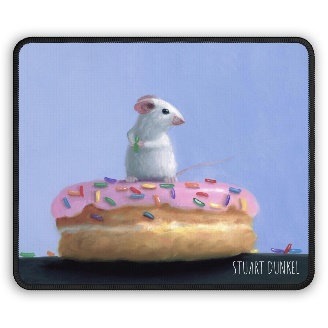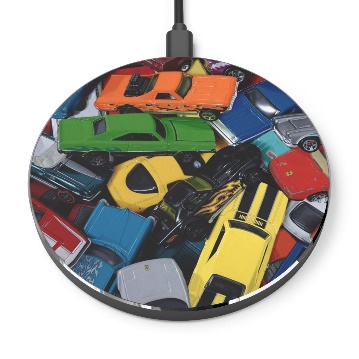COMMENTS ON THE ART MARKET
Our Online Gift Shop is now OPEN!
Over the past few weeks, Alyssa has created an online gift shop with a variety of products featuring images from Stuart Dunkel, Tony South, and Beth Sistrunk. Over the past few days, she has added images from Kari Tirrell, Ben Bauer, and Todd Casey, as well as a few additional products (backpacks, mousepads, laptop sleeves, greeting cards, notebooks, socks and puzzles). Over the next few months, we will continue adding images from our other artists and expand the product line. Oh, there is also a small selection of historical works by Munier, Dupré, Vibert, Ridgway Knignt, etc.
____________________
Gallery News
Getting Closer
The build out is moving along. We stopped by the space a few times this month and are happy to report that the crew is moving full steam ahead. A good portion of the electrical wiring is done, and they have begun installing the sheetrock. While there is still a good deal of work ahead, we are pleased with the progress.

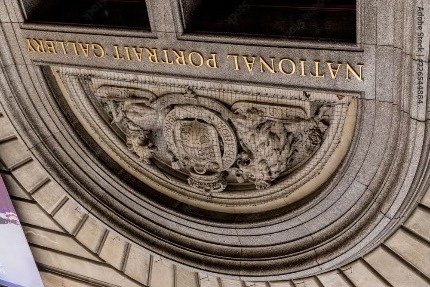
____________________
Stocks & Crypto
By: Lance
We’re in the home stretch of 2022 and the end can not come soon enough… it’s been quite a bumpy year, but things seem to be ending on a somewhat positive note. Maybe I shouldn’t jinx it.
November saw a small rally across the board. In fact, The Dow and S&P 500 have been on a nice run the past two months. The Dow gained more than 5.5% through November, and recaptured much of this year’s losses since it bottomed out at the end of September – at its worst, we were looking at losses of nearly 21%... now sitting at 34,589, it’s a loss of less than 7%. Not great, but not terrible all things considered. The S&P 500 lies a bit deeper in the red for the year, but saw a similar gain for the month – just shy of 5.5%. The NASDAQ has been the stubborn one these past few weeks, and of the bunch, it’s experienced the worst losses this year – though it gained more than 4% this month, the small rally seen in October was wiped away in the final days last month. As such, it continues to flirt with a nearly 30% loss this year… rough. Fortunately, Chairman Powell has signaled the Fed will slow the pace of its aggressive rate-hiking – that should ease some of the pressure as we finish up 2022.
Looking at currencies and commodities… both the Pound and Euro strengthened considerably compared to the US Dollar, each up more than 5% this past month. Probably worth pointing out that they are still down for the year – 10.5% and 8%, respectively. Crude dipped about 7%, now hovering in the region of $80/barrel. And conversely, gold popped nearly 10% as it continues to test the $1,800 region it saw in the Spring.
I’m not sure I have it in me to go over crypto and the FTX fiasco in much detail – it’s truly nauseating. If you have any interest, I’m sure you’ve already read the news… and if you haven’t read about it yet, don’t! FTX was a cryptocurrency exchange… key word ‘was’. It was the third largest exchange by volume, and had more than one million users. Long story short, the 30-year-old founder was running it more like a Ponzi scheme and billions of dollars are missing in the wake of a bankruptcy filing… lots of people lost a lot of money, and it is dragging the crypto market down with it – not that it needed any more fuel for the fire. The crypto arena was an absolute bloodbath through November… Bitcoin shed another 17%, now down more than 65% on the year... and Ethereum gave up nearly 19%, which puts it down 68% for the year. Litecoin was the outlier, seeing a 40% gain! Don’t get too excited, it’s still down about 50% for the year but I guess that’s looking like a win. In the immediate wake of the FTX news, the numbers looked even worse… and it is truly anyone’s guess how this one plays out.
So yea, I’m sure that all puts a smile on your face… Happy Holidays!
____________________
The Dark Side
By: Nathan
Picture Perfect: How A Postcard Solved A WWII Art Mystery
 The Restitutions Commission of the Netherlands made a surprising decision recently to return an abstract masterwork stolen by the Nazis to the descendants of its Jewish owner. View of Murnau with Church by Wassily Kandinsky was created in 1910 and previously owned by Johanna Margarethe Stern-Lippmann, a Jewish Dutch art collector who was killed at Auschwitz in 1944. Since 1951, the painting has been hanging at the Van Abbemuseum in the Dutch city of Eindhoven. The museum acquired the painting from a Jewish art dealer named Karl Legat, who, in exchange for protection from deportation, helped the Nazis in expropriating art from the Netherlands.
The Restitutions Commission of the Netherlands made a surprising decision recently to return an abstract masterwork stolen by the Nazis to the descendants of its Jewish owner. View of Murnau with Church by Wassily Kandinsky was created in 1910 and previously owned by Johanna Margarethe Stern-Lippmann, a Jewish Dutch art collector who was killed at Auschwitz in 1944. Since 1951, the painting has been hanging at the Van Abbemuseum in the Dutch city of Eindhoven. The museum acquired the painting from a Jewish art dealer named Karl Legat, who, in exchange for protection from deportation, helped the Nazis in expropriating art from the Netherlands.
The committee decided in 2018 that the Kandinsky painting should remain in the museum due to the lack of evidence that the Stern-Lippmann family owned it. This is surprising since their newest ruling returning the Kandinsky to the family cites evidence that was likely well known beforehand. Most notably, the provenance previously accepted by the committee shows that Legat had bought the painting from the artist Arthur Kaufmann. However, the price paid indicates that Legat acquired it after the war when the Kaufmann family fled from the Netherlands before the German occupation. So clearly, the discrepancies in that information should have been a red flag. But the Stern-Lippmann family recently obtained some new evidence from a small, seemingly insignificant source: a simple postcard featuring the image of the Kandinsky work. The letter, dated 1966, was written by the wife of one of the art dealers involved in the Nazis’ theft of Dutch art. It specifically mentions View of Murnau with Church as “our Kandinsky”. The committee interpreted this as an admission that she and her husband were involved in the expropriation of this specific painting during the war. It seems this was enough to cause the committee members to reverse course.
View of Murnau with Church is only the most recent work of art to be returned to the original owners' heirs following the Second World War. This is especially significant since just last year, the Dutch government began to reevaluate their restitution laws after recommendations from a governmental committee.
The Ruffini Affair At An End?
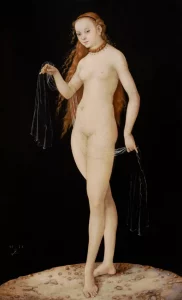 European authorities have long suspected the Italian art dealer Giuliano Ruffini of being at the center of one of the largest Old Masters forging networks in Europe. He and his colleagues allegedly created fake paintings and passed them off as originals by Orazio Gentileschi, Frans Hals, Parmigianino, and Lucas Cranach the Elder. Investigators in both France and Italy had to overcome many roadblocks, but they finally got their man. Giuliano Ruffini was arrested in Italy last Friday on fraud, money laundering, and art forgery charges.
European authorities have long suspected the Italian art dealer Giuliano Ruffini of being at the center of one of the largest Old Masters forging networks in Europe. He and his colleagues allegedly created fake paintings and passed them off as originals by Orazio Gentileschi, Frans Hals, Parmigianino, and Lucas Cranach the Elder. Investigators in both France and Italy had to overcome many roadblocks, but they finally got their man. Giuliano Ruffini was arrested in Italy last Friday on fraud, money laundering, and art forgery charges.
For over three decades, Ruffini dealt in Old Master paintings, selling them for millions through intermediaries to major museums and galleries worldwide, including the Metropolitan Museum of Art in New York, the National Gallery in London, and the Kunsthistorisches Museum in Vienna. Evidence also suggests that Ruffini sold a forged Lucas Cranach Venus painting that, in only a few months, made its way to the Colnaghi Gallery, one of the most famous Old Master galleries in the world. Colnaghi then sold the fake Cranach to the Prince of Liechtenstein in 2013 for €7 million, even after specialists at Christie’s could not fully authenticate the work due to inconclusive tests. French authorities opened their investigation into Ruffini and his colleagues in 2014 when an anonymous letter accused Ruffini of being the mastermind behind a ring of forgers. One of the first steps the investigation took was impounding and confiscating the Cranach Venus, which was being exhibited as part of the Prince of Lichtenstein’s collection (it has since been returned to the prince to avoid harming “the rights of an owner of good faith”). Not long after, the Seattle hotel developer Richard Hedreen, on the recommendation of Sotheby’s, sent a Frans Hals portrait in his collection, once owned by Ruffini, to a forensic laboratory in Massachusetts for testing. The lab found plastic-coated air abrasive on the frame, likely to strip paint from the wood, and small specks of titanium white pigment, which was not developed until the twentieth century. The lab concluded that the portrait, which was supposed to be from the early to mid-seventeenth century, was created no earlier than the mid-twentieth century. Keep in mind that this is a painting that, before Hedreen’s purchase in 2008, the Louvre was trying to raise money to buy it for €5 million.
Ruffini originally got his start when he received six Old Master paintings as a gift from his close friend, Paris gallery owner Andrée Borie. He soon developed a reputation for finding forgotten masterworks at auctions and flea markets, starting with Étude du Christ by Antonio da Correggio which he sold in 1997 for 350 million lire (or about $215K at the time, and $400K today). It is unknown when he first got involved in art forgery, but a French court issued his first arrest warrant for forgery in 2019. However, a court in Bologna dismissed these warrants, and Ruffini walked free. But now, he’s been arrested again, opening up the possibility that this whole messy story will come to a close sooner rather than later.
____________________
Really?
By: Amy
Walking In Steve Jobs' Shoes
Would you want to walk in Steve Jobs' shoes? Well, someone may be doing just that! A pair of Jobs' Birkenstocks from the 1970s recently sold at auction and set an auction record for the highest price paid for a pair of sandals …yes, there are records kept for everything!

In 1976, Jobs and Steve Wozniak founded Apple at Jobs' parent's house in Los Altos, California; the house was named a historic landmark in 2013. The well-worn Birkenstock sandals in which Jobs paced the house was anticipated to fetch $60k, and almost tripled the estimate when the final bid came in at $175K ($218,750 w/p). Not bad for a shabby pair of shoes.
The new owner has not been disclosed, and while I am sure the shoes are very comfortable, they will be very difficult to fill. If you want a new pair, they will cost you about $135 - but you will have to make your own history in them.
The Day The Music Died
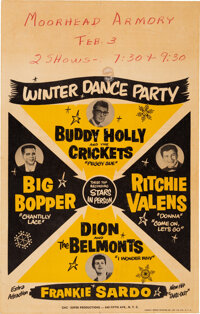 'The Day the Music Died' are lyrics from Don Mclean's 1971 song American Pie, his greatest hit. But this isn't about a song; it's about a piece of memorabilia found after the tragedy that occurred on February 3, 1959, referenced in the song. "The music died" the day musicians Buddy Holly, Ritchie Valens, and J.P. Richardson, known as The Big Bopper, were killed in a plane crash near Clear Lake, Iowa.
'The Day the Music Died' are lyrics from Don Mclean's 1971 song American Pie, his greatest hit. But this isn't about a song; it's about a piece of memorabilia found after the tragedy that occurred on February 3, 1959, referenced in the song. "The music died" the day musicians Buddy Holly, Ritchie Valens, and J.P. Richardson, known as The Big Bopper, were killed in a plane crash near Clear Lake, Iowa.
Buddy Holly and his band, which included Waylon Jennings, Tommy Allsup, and Carl Bunch, were headlining a tour across the Midwest called the "Winter Dance Party." Also performing were new artists Ritchie Valens, the Big Bopper, and the group Dion & the Belmonts.
As several people on tour came down with the flu and some with frostbite, Holly became uncomfortable on the bus and decided to charter a plane for his group to their next stop in Moorehead, Minnesota. But Carl Bunch had been hospitalized with frostbite and could not join the group for the next concert. Jennings decided to give his seat on the plane to the Big Bopper, who had the flu. Meanwhile, Allsup and Valens flipped a coin for the last seat - Valens won the toss... "won" may not be the right word.
The weather conditions were poor that night, and the pilot lost control shortly after takeoff. Tragically, the small plane crashed into a cornfield; there were no survivors.
The concert in Moorehead was the tour's twelfth performance... surprisingly, the show did go on. The concert promoters asked for help from the local talent and a young Bobby Vee, just 15 years old, along with his rock band, "The Shadows", volunteered and were chosen to fill in; their performance was a great success and thus started Vee's career. Bobby Vee knew all the words to every Buddy Holly song and was asked to finish out the next two weeks of the tour with Jennings and Allsup. That said, a poster for the Moorehead show just made history as the most expensive concert poster sold at auction.
This authentic concert poster may be the only one to exist. It is untouched, unrestored and still has some of the adhesives on the back used to paste it to the telephone pole it fell off of. A maintenance man found it and kept it as a sad remembrance of the day. Years later, when music memorabilia became greatly sought after, his family sold it to a poster dealer. The dealer later sold it to a collector, who entered it into the auction along with other concert posters from his collection. Now more than 60 years later, Buddy Holly and the Winter Dance Party tour are in the news again... the poster sold for $360K ($447K w/p), breaking the record set in April when a Beatles 1966 Shea Stadium concert poster sold for $275K.
____________________
Architecture In Art
By: Lance
Architecture in Art - Mark Laguë's Chrysler Building
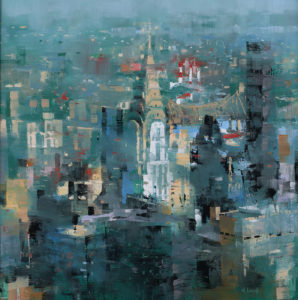 A few weeks ago, we took a look at Grand Central Station through the work of Johann Berthelsen. As I mention in that post, the station attracted a ton of real estate development in the area… it eventually became known as Terminal City, the most desirable commercial location in New York.
A few weeks ago, we took a look at Grand Central Station through the work of Johann Berthelsen. As I mention in that post, the station attracted a ton of real estate development in the area… it eventually became known as Terminal City, the most desirable commercial location in New York.
Possibly the most notable structure that went up in the wake of Grand Central’s completion is the iconic Chrysler Building. In Mark Laguë’s Chrysler Building, the tower rises up and towers over its surroundings. It’s situated in today’s Midtown East, and more specifically the Turtle Bay neighborhood. Though the 1,046 foot tower now only ranks number 11 on the list of tallest building in the city, when it was completed in 1930 it was the tallest building in the world… but that only lasted 11 months. In a race to be the tallest building, Walter Chrysler hurried to beat the Empire State Building to completion... but in doing so, he left the other developers enough time for last minute revisions and the Empire State Building opened in 1931 at 1,250 feet (but that’s for another day).
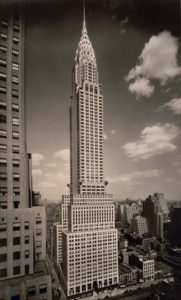 The Chrysler Building’s 77 stories required approximately 30,000 tons of steel and nearly 4 million bricks! While it was built and designed specifically for the car manufacturer, the Chrysler corporation didn’t pay for any of the construction and never owned it… the company’s founder and American Automobile pioneer Walter Chrysler funded the entire $20 million project personally so his children could inherit it.
The Chrysler Building’s 77 stories required approximately 30,000 tons of steel and nearly 4 million bricks! While it was built and designed specifically for the car manufacturer, the Chrysler corporation didn’t pay for any of the construction and never owned it… the company’s founder and American Automobile pioneer Walter Chrysler funded the entire $20 million project personally so his children could inherit it.
It also has some pop-culture significance as it’s been featured in a ton of movies… like when Spider-Man perched up on one of the gargoyle-like ornaments on the 61st floor overlooking the city; or when an asteroid knocked off the top half in Armageddon.
Today, the Chrysler Building remains one of the most prominent features of New York’s skyline. It was designated as both a City Landmark and a National Historic Landmark, as it is widely regarded as the paragon of Art Deco architecture.
Architecture in Art - Guy Carleton Wiggins' City Hall Park
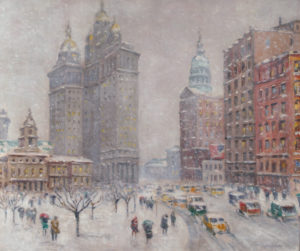 This week we’re taking a look at one of New York City’s early skyscrapers through the work of Guy Carleton Wiggins.
This week we’re taking a look at one of New York City’s early skyscrapers through the work of Guy Carleton Wiggins.
Wiggins’ City Hall Park captures a vantage point from the south end of the park. In the foreground to the left, we see City Hall – the seat of NYC government and the oldest city hall building in the US that still houses governmental functions. Then on the right of the composition, we see notable historic structures like the original New York Times Building and the Potter Building, which housed Joseph Pulitzer’s New York World newspaper at the turn of the 20th century. But in the distance, towering over all the others, sits the Manhattan Municipal Building. The sprawling 40-story structure has about 1 million square feet of space, making it one of the largest government buildings in the world… not to mention it’s adorned with America’s first supermodel!
By the late 1800s, NYC’s government had outgrown City Hall. Various government agencies started renting space from surrounding buildings, but it quickly became unmanageable. In 1885, a team was created to look for plots of land for a single government building. They hosted several design competitions, but plan after plan was scrapped; the process dragged on for decades. It wasn’t until 1907 that things would truly begin moving forward – the city hosted their 4th competition, inviting thirteen notable architects to submit plans.
 The panel ultimately chose McKim, Mead & White. They were of the most prominent architects of their time… responsible for building The Washington Arch in Washington Square Park (1892), Columbia University (1893-1900), The Brooklyn Museum (1895), Penn Station (1904), and dozens of other significant structures throughout the city. Today, they are regarded as one of the most influential firms in American architecture and a leader of the American Renaissance.
The panel ultimately chose McKim, Mead & White. They were of the most prominent architects of their time… responsible for building The Washington Arch in Washington Square Park (1892), Columbia University (1893-1900), The Brooklyn Museum (1895), Penn Station (1904), and dozens of other significant structures throughout the city. Today, they are regarded as one of the most influential firms in American architecture and a leader of the American Renaissance.
Construction began here in July of 1909 and took about 5 years, with a total cost of $12 million (equivalent to more than $230 million today). By the time of completion, it was expected to save the city roughly $800K per year in rent… that said, the debt taken on to pay for it wouldn’t be repaid for 50 years. In a half century, the $12 million accumulated more than $30 million in interest!
One notable feature stands atop the building – Civic Fame, a 25-foot tall statue created to celebrate the consolidation of the five boroughs into the City of New York. Model and actress Audrey Munson posed for the artist who created it… known as “Miss Manhattan” and “American Venus,” she appears in countless sculptures across the country, and is prominently placed in more than a dozen locations across NYC. From granite to gold, she graces courthouses, government buildings, monuments, and even the NY Public Library… but this one happens to be the largest of them all. In fact, it is the largest statue in the city, that is unless we’re including The Statue of Liberty.
Architecture In Art - John Stobart's South Street, New York, 1895
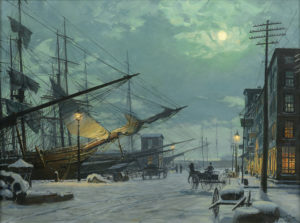 This one may be a bit of a stretch for Architecture in Art, perhaps it’s time to come up with a better name for this series. Nevertheless, this area is one of the most historically important places in New York City so it’s more than worthy of your attention. This week, we’re taking a look at the South Street Seaport, through the work of John Stobart in South Street, New York, 1895.
This one may be a bit of a stretch for Architecture in Art, perhaps it’s time to come up with a better name for this series. Nevertheless, this area is one of the most historically important places in New York City so it’s more than worthy of your attention. This week, we’re taking a look at the South Street Seaport, through the work of John Stobart in South Street, New York, 1895.
We’re going way back for this one, before New York was even New York. The first pier appeared here in 1625 as part of the Dutch West India Co.; at the time, it was known as New Amsterdam – a Dutch colony. Back then, the shoreline was three blocks west. But due to the naturally shallow water and increasing size of ships, a decision was made in the late 1600s to build retaining walls, which would raise the water level - the walls were essentially landfills filled with excrement, dead animals, sunken ships and muck from the bottom of the river. Is this a good time to mention the East River isn’t even technically a river? I digress. Much of that landfill we now call the Lower East Side… by the late 1600s, the shoreline was Water Street and by the early 1800s, land was built out to South Street.
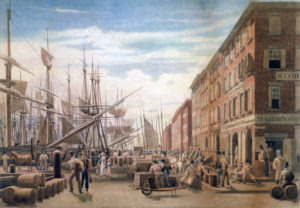 Through the 1700s it was the focal point of trade from England, though that was obviously interrupted during the American Revolution. The port recovered quickly after the war, and New York was equipped with the country’s most developed trading port.
Through the 1700s it was the focal point of trade from England, though that was obviously interrupted during the American Revolution. The port recovered quickly after the war, and New York was equipped with the country’s most developed trading port.
In 1784, the first independent American ship sailed to China and returned with tea, porcelain and other goods, marking the first international US trade relations. Then in 1818, the first regular trans-Atlantic travel was established from Liverpool, England to the ‘Port of New York’. This port was truly the reason New York became one of the centers for world trade.
____________________
The Art Market
By: Nathan & Howard
The Getty Collection Volume 1 At Christie’s New York
By: Nathan
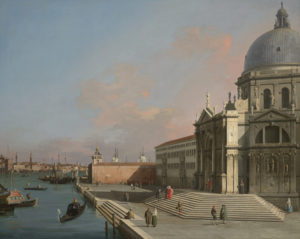 Between Thursday, October 20th, and Tuesday, October 25th, Christie’s location at New York’s Rockefeller Center auctioned off over 1,300 items as part of the collection of Ann and Gordon Getty. On previous trips to Christie’s, their exhibition galleries look like… well, galleries. But for the Getty sale, Christie's transformed many of the ground floor galleries from exhibition spaces into lavishly decorated rooms, seemingly from an old world chateau. This was because, on top of the paintings and drawings featured during the first two days of the sale, the collection also featured furniture, rugs, textiles, clocks, and Tiffany lamps, among many other items. The Gettys were indeed some of the wealthiest people in the United States, with Gordon inheriting a $2 billion fortune from his father, the oil baron J. Paul Getty. Over six days, ten different live and online sales brought in over $150M. They kicked things off on Thursday with a live evening sale of paintings of all kinds, mainly by nineteenth- and twentieth-century artists, as well as some from the Old Masters (w/p – with buyer's premium).
Between Thursday, October 20th, and Tuesday, October 25th, Christie’s location at New York’s Rockefeller Center auctioned off over 1,300 items as part of the collection of Ann and Gordon Getty. On previous trips to Christie’s, their exhibition galleries look like… well, galleries. But for the Getty sale, Christie's transformed many of the ground floor galleries from exhibition spaces into lavishly decorated rooms, seemingly from an old world chateau. This was because, on top of the paintings and drawings featured during the first two days of the sale, the collection also featured furniture, rugs, textiles, clocks, and Tiffany lamps, among many other items. The Gettys were indeed some of the wealthiest people in the United States, with Gordon inheriting a $2 billion fortune from his father, the oil baron J. Paul Getty. Over six days, ten different live and online sales brought in over $150M. They kicked things off on Thursday with a live evening sale of paintings of all kinds, mainly by nineteenth- and twentieth-century artists, as well as some from the Old Masters (w/p – with buyer's premium).
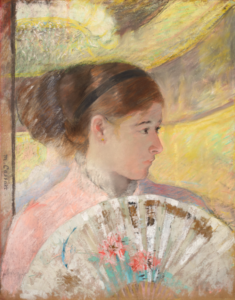 There were certainly a lot of surprises in store, starting at the very beginning. That night’s big star was supposed to be a colossal Venetian cityscape by the Italian master Giovanni Antonio Canal, popularly known as Canaletto. Venice, the Grand Canal Looking East with Santa Maria della Salute shows exactly what the title describes. The beautiful church, literally Saint Mary of Health, still sits on the Grand Canal today, close to its eastern entrance. It was so named since it was built as an act of thanks after a plague outbreak finally subsided in 1631. The work’s provenance is also extensively detailed, going back to when the wealthy English landowner William Holbech commissioned the painting sometime in the 1740s for display at his estate in Warwickshire. The picture remained in the Holbech family before Ronald Holbech sold it to the Savile Gallery in London around 1930. Everyone was incredibly excited to see the masterpiece cross the block, especially since it was featured early in the sale. The work was estimated to sell for at least $6M. But I, and likely many others, was disappointed when the auctioneer announced that Christie's had withdrawn the work. It had been secured in a private sale finalized earlier in the day. While they did not disclose anything else at the time, later on, it was revealed that the Canaletto’s buyer was the Fine Art Museums of San Francisco (FAMSF).
There were certainly a lot of surprises in store, starting at the very beginning. That night’s big star was supposed to be a colossal Venetian cityscape by the Italian master Giovanni Antonio Canal, popularly known as Canaletto. Venice, the Grand Canal Looking East with Santa Maria della Salute shows exactly what the title describes. The beautiful church, literally Saint Mary of Health, still sits on the Grand Canal today, close to its eastern entrance. It was so named since it was built as an act of thanks after a plague outbreak finally subsided in 1631. The work’s provenance is also extensively detailed, going back to when the wealthy English landowner William Holbech commissioned the painting sometime in the 1740s for display at his estate in Warwickshire. The picture remained in the Holbech family before Ronald Holbech sold it to the Savile Gallery in London around 1930. Everyone was incredibly excited to see the masterpiece cross the block, especially since it was featured early in the sale. The work was estimated to sell for at least $6M. But I, and likely many others, was disappointed when the auctioneer announced that Christie's had withdrawn the work. It had been secured in a private sale finalized earlier in the day. While they did not disclose anything else at the time, later on, it was revealed that the Canaletto’s buyer was the Fine Art Museums of San Francisco (FAMSF).
Apart from being kept from seeing the potential bidding war over the Canaletto, the rest of the sale went incredibly smoothly, more or less. The eventual star of the sale was an 1878 portrait by Mary Cassatt entitled Young Lady in a Loge Gazing to Right. Here we see a close, very intimate view of a young woman with her fan sitting in a theater box (at least that’s what the title suggests). She sits against a mirror, creating spatial confusion similar to Manet’s A Bar at the Folies-Bergère. But here, we also see Cassatt experimenting relatively early in her career with different media, combining watercolor, pastel, and gouache to create slightly different textures and color gradients. The portrait was once owned by Cassatt’s contemporary Paul Gauguin, and was last sold at Sotheby’s New York in 1992 for $2.5M w/p (equivalent to $5.4M in 2022, adjusted for inflation). Christie’s house specialists were indeed expecting the Cassatt to be among the top lots, estimating it would bring in $5M. When the hammer finally came down at $6.2M (or $7.5M w/p), it set a new auction record for a work by Cassatt.
Experts assigned another $5M estimate to Henri Matisse’s still life Bouquet, vase chinois. Executed in 1901, this oil-on-board last sold at Christie’s New York on May 11, 1995 for $1.3M w/p (equivalent to $2.6M in 2022). It eventually fell nicely within estimate when the hammer came down at $4.2M (or $5.1M w/p). Next was actually a tie for third: an Odilon Redon floral still-life Le pavot noir sold for $3.1M (or $3.8M w/p), more than double the $1.5M high estimate and more than six times what it made last time it was at auction at Sotheby’s London in 1995. Also selling for $3.1M was another of the Canaletto cityscapes that the Gettys had in their collection. This one was also looking over the Grand Canal but a little further up its course from Santa Maria della Salute. While it was not as large as the one purchased by FAMSF, it was no less detailed in terms of the architectural background and the figures on their gondolas in the foreground.
Normally, at this point, I would talk about some of the surprises featured in the sale, but I think I’ll do something a little different. I want to talk about something that surprised me personally, not because of the hammer price, but rather because of aesthetic quality. I visited Christie’s on the Tuesday before the sales began, and two things stuck out. One was the enormous size of Canaletto’s Santa Maria della Salute. The other was a work that hadn’t caught my attention before. This was possibly because I had been looking at all the lots through my computer screen. Here was Ballerine Spagnole al Moulin Rouge by Giovanni Boldini. I suppose it just caught me off-guard since you wouldn’t have thought it was painted in 1905. The quick brushstrokes surrounding the dancer, a sort of gray and blue chaos, suggest a dynamism that would be very appropriate for the portrait of a dancer. It’s almost reminiscent of the action painting of abstract expressionism not seen until half a century later. It was one of the lots I was personally rooting for when it came across the block Thursday night, and it absolutely deserved the $1.5M hammer price (or $1.86M w/p) it eventually achieved.
Even though twenty-four of the total fifty-eight available lots (41%) sold below estimate, the fact that no lots were bought in ensured that the sale as a whole fell within its pre-sale estimate. By the end, Christie’s had brought in $64.4M, with the house specialists having a 29% accuracy rate. Though Christie’s sold the Getty Collection in ten sales across six days, almost half the money made by the collection came from this one evening sale.
The Getty Collection Volume 2 At Christie's New York
By: Nathan
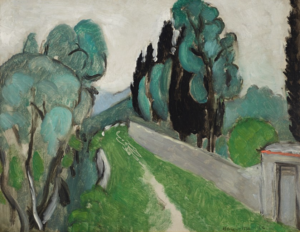 On Friday, October 21st, Christie’s New York continued its series of sales featuring the collection of Ann and Gordon Getty. While the first evening sale on Thursday mainly focused on what Christie’s referred to as “important pictures”, the day sale on Friday featured mainly nineteenth- and twentieth-century paintings, and a handful of Old Masters works. The whole sale was a bit of a nail-biter. Many were unsure if enough lots had made their pre-sale estimates for the auction to be successful. But eventually, it pulled through in the end (w/p – with buyer’s premium).
On Friday, October 21st, Christie’s New York continued its series of sales featuring the collection of Ann and Gordon Getty. While the first evening sale on Thursday mainly focused on what Christie’s referred to as “important pictures”, the day sale on Friday featured mainly nineteenth- and twentieth-century paintings, and a handful of Old Masters works. The whole sale was a bit of a nail-biter. Many were unsure if enough lots had made their pre-sale estimates for the auction to be successful. But eventually, it pulled through in the end (w/p – with buyer’s premium).
Sadly, eight of the eleven lots with a $1M high estimate or higher sold for far under what Christie’s specialists had predicted. Additionally, some of the works with relatively low estimates were propelled into the top three of the sale. One such painting was the 1918 landscape Paysage avec cyprès et oliviers aux environs de Nice by Henri Matisse. It was the sale’s biggest surprise, only expected to sell for $250K maximum, but achieved $1.8M (or $2.2M w/p). This is more than seven times what experts had predicted, and more than ten times what it had sold for the last time it came up at auction at Christie’s London in 1995. Next up was one of the more highly-valued lots expected to do well during the sale: an 1892 pastoral landscape by Alfred Sisley. Moret-sur-Loing au soleil couchant sold for just over its $1.2M high estimate, with the hammer coming down at $1.3M (or $1.62M w/p). Then, similar to the Matisse, third place went to a complete surprise. Fleurs et livres by Paul Gauguin is a relatively small still-life painting, only measuring 5 x 7.25 inches. Having last sold at Sotheby’s New York in 1995 for $156.5K w/p, the house specialists expected anywhere between $200K and $400K for the Gauguin. However, the bids kept steadily coming in, elevating the final hammer price to more than three times the high estimate at $1.3M (or $1.62M w/p).
For most of the sale, I didn’t really expect Christie’s to meet their total pre-sale estimate because many high-valued lots, as previously mentioned, were selling for drastically underestimate. In an attempt to stir up interest, the pair of auctioneers chose to set the opening bids far lower than expected. For example, Interior of the Teatro San Benedetto by Francesco Guardi was expected to sell for at least $700K. Interest began to die out rather early on, so the work only sold for $440K (or $554.4K w/p). Additionally, Christie's experts predicted the Edgar Dégas pastel-on-paper work Deux femmes causant would be one of the top lots of the sale, with an $800K low estimate. Maybe it was the stamped signature or a lack of interest in this particular subject, but the drawing only achieved $400K (or $504K w/p). But probably the day's biggest disappointment came with Camille Pissarro’s landscape Effet de neige à L'Hermitage, Pontoise. This 1875 oil-on-canvas painting was expected to be one of the stars of the sale, with specialists assigning a minimum estimate of $1M. Seeing it sell for only $380K (or $478.8K w/p) was incredibly disheartening.
While many highly valued lots sold for far under their assigned estimate ranges, the fact that they sold at all probably helped regarding the sale’s final outcome. But what really pushed it over the top was a bit of a resurgence in interest toward the end. Fourteen of the last twenty lots sold over their estimates... that included the Gauguin still life, many of the sale’s flower still-life paintings by Henri Fantin-Latour, all three Odilon Redon works, and an interior scene by Winston Churchill. Of the one hundred-five available lots, forty (38%) sold below their estimates. However, thirty-nine exceeded their estimates, while twenty-three sold within. This gave Christie’s a sell-through rate of 97%, while the house specialists earned a 22% accuracy rate. Though I was initially unsure if the sale as a whole would break past its $23.3M minimum pre-sale estimate, the push at the end brought the sales total to a comfortable $27.1M.
The Paul Allen Collection Part I at Christie's New York
By: Nathan
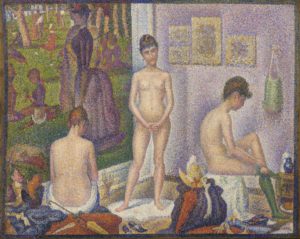 On Wednesday, November 9th, Christie’s New York hosted what was expected to be the most valuable single collection ever sold at auction, that of Microsoft co-founder Paul Allen. Previously, that title was held by Harry and Linda Macklowe. They sold their collection of modern and contemporary art at Sotheby’s New York for $922M w/p across a pair of evening sales on November 15, 2021 and May 16, 2022. Not only was the Allen collection set to break that record, but Wednesday’s sale, the first of two, was also expected to break the record for the most expensive single auction in history. Until Wednesday, that record was held by Christie’s New York when their postwar and contemporary evening sale brought in $744.9M w/p. The first night of the Paul Allen collection smashed all those records.
On Wednesday, November 9th, Christie’s New York hosted what was expected to be the most valuable single collection ever sold at auction, that of Microsoft co-founder Paul Allen. Previously, that title was held by Harry and Linda Macklowe. They sold their collection of modern and contemporary art at Sotheby’s New York for $922M w/p across a pair of evening sales on November 15, 2021 and May 16, 2022. Not only was the Allen collection set to break that record, but Wednesday’s sale, the first of two, was also expected to break the record for the most expensive single auction in history. Until Wednesday, that record was held by Christie’s New York when their postwar and contemporary evening sale brought in $744.9M w/p. The first night of the Paul Allen collection smashed all those records.
The sale began with a burst of energy with Quatre Baigneuses by Pablo Picasso. The auctioneer, Adrian Meyer, spent the first fifteen seconds speaking so quickly, acknowledging every bid coming in, that he sounded as if he was moderating a livestock auction in Texas rather than a fine art saleroom in New York. The sale’s top lots were what exactly the Christie's specialists were anticipating. The star in first place was Les Poseuses by the pointillist master Georges Seurat, described by Meyer as perhaps one of the finest pointillist paintings ever created. It was last sold at auction in June 1970 at Christie’s London, where it achieved $1.03M w/p. Most people will mainly know Seurat from his incredibly popular Sunday on the Isle of La Grande Jatte, housed at the Art Institute of Chicago. In case you needed that reminder, Les Poseuses shows nude models in the artist’s studio with the famous park scene on the wall in the background. The bidding started at $75M and, within thirty seconds, made its way up to $100M. Over the next five minutes, bids slowly trickled in from the telephone banks until the hammer came down at $130M (or $149.2M w/p). This completely smashed Seurat’s auction record, which was previously set at Sotheby’s New York in 1999, when Paysage, l'Île de la Grande-Jatte sold for $35.2M w/p. Second place, however, was what the experts predicted would be the true star of the sale. Paul Cézanne’s Montagne Sainte-Victoire was used extensively in the sale’s promotion, understandably so. It was last sold at auction in May 2001 at Phillips New York for $38.5M w/p. While it may have been slightly overshadowed by the Seurat painting, $120M (or $137.8M w/p) is still an impressive hammer price, especially since the bidding only lasted a grand total of ninety seconds. And lastly, the third lot to sell for over $100M, the 1888 Vincent van Gogh work Verger avec cyprès. While Adrian Meyer made a point to highlight that the Seurat painting had not been up at auction in over fifty years, the last time that the Van Gogh sold was in December 1935. It’s one of the last of Van Gogh’s orchard paintings to remain in private hands, so the hammer price of $102M (or $117.2M w/p) was not unwarranted.
While the nineteenth-century European modernist masters were the ones that dominated the sale, they were by no means the only group represented. The auction also featured Old Masters like Botticelli and Brueghel the Younger, the greats of abstract painting like Klee and Kandinsky, and surrealists like Dalí and Tanguy. While they all received their respective millions, there was a bit of a wake-up call halfway through the sale with Andrew Wyeth’s painting Day Dream. Though created in 1980, the medium is incredibly old-fashioned. Wyeth chose tempera on panel to show a nude woman asleep and veiled by a sheer canopy hanging from somewhere unknown to the viewer. Though the medium is often associated with medieval art before oil paints became popular in the West, it remained in use among some twentieth-century artists like Wyeth and Thomas Hart Benson. Day Dream had previously been in the collection of the American businessman Armand Hammer and was displayed in his eponymous museum in Los Angeles until 2011. It was predicted by Christie's to make a measly $3M at most. So even in an exciting, historic sale such as this, the fact that bids kept coming in for something relatively low-value for this sale made it only more exciting. The hammer eventually came down at $20M (or $23.3M w/p), more than six times what it was expected to make.
Ultimately, the first sixty items of Paul Allen’s collection accrued a price tag some would describe as ludicrous, possibly even obscene, depending on your perspective. Even with over ninety lots left to be sold in the day sale, the collection has already smashed the record for the most expensive collection ever sold at auction. It also obliterated the record for the most expensive single auction in recorded history. Sixty paintings and sculptures brought in a total hammer price of $1.29 billion (or $1.5 billion w/p), slightly above the $1.23 billion number that the house experts had given as their total presale high estimate.. All sixty lots sold, with thirty-five (or 58%) exceeding the estimates Christie’s experts had assigned to them. With twenty-one lots selling within estimate and four selling below, Christie’s house specialists earned a 35% accuracy rate that night. Safe to say that this was a historic night not just for Christie’s but for the art market.
The Paul Allen Collection Part II At Christie's NY
By: Nathan
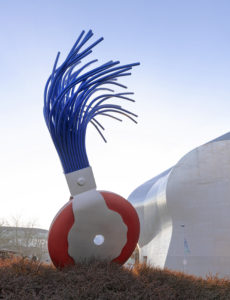 On Wednesday, November 10th, Christie’s New York continued in their sale of the Paul Allen Collection. Following the immense, billion-dollar sale the night before, the day on sale the following morning might’ve seemed a little measly. Still, it featured some incredible examples of modern and contemporary art. The works of nineteenth-century modernist masters like Cézanne and Van Gogh dominated the evening sale. While works by Toulouse-Lautrec, Sisley, and Signac were featured in the day sale, the twentieth-century abstract masters dominated on Thursday (w/p = with buyer’s premium).
On Wednesday, November 10th, Christie’s New York continued in their sale of the Paul Allen Collection. Following the immense, billion-dollar sale the night before, the day on sale the following morning might’ve seemed a little measly. Still, it featured some incredible examples of modern and contemporary art. The works of nineteenth-century modernist masters like Cézanne and Van Gogh dominated the evening sale. While works by Toulouse-Lautrec, Sisley, and Signac were featured in the day sale, the twentieth-century abstract masters dominated on Thursday (w/p = with buyer’s premium).
The sale's top lot was, interestingly, a collaboration. The stainless steel and fiberglass sculpture Typewriter Eraser, Scale X was created in 1999 by the husband-wife team of the late Claes Oldenburg, who passed away earlier this year, and Coosje van Bruggen. Allen acquired it in the year of its creation, loaning it for ten years to the Olympic Sculpture Park at the Seattle Art Museum. Christie’s specialists predicted the sculpture to be the sale's top lot, assigning a $5M to $7M estimate range, which it easily fell into. It achieved its high estimate at $7M (or $8.41M w/p). Next was the 1953 Sam Francis painting entitled Red No. 1. The study in red and gray reminds me very much of the work of Mark Rothko, both because of its composition as a color field painting and its size (64 x 45 inches). I suppose that isn’t surprising since Francis cited abstract expressionists like Rothko as his early influences. Though Red No. 1 was expected to make a couple million dollars at least, it was surprising when the hammer came down at $5.6M (or $6.87M w/p). And finally, in third place and rounding out the day sale’s highlights of postwar and contemporary art: an incredibly colorful, geometric work by Frank Stella. The painting, Cinema de Pepsi III, was executed in 1966 and made from acrylic and fluorescent paint on canvas. Allen purchased it in 2002 at Christie’s London for the low, low price of $347.65K w/p. While the title is rather confusing and carries little significance for me, the design of the work is mesmerizing. Stella’s command of color is incredibly evident here, as even though the painting is on a single canvas, it almost looks like a photograph and its negative displayed side-by-side. Cinema de Pepsi III was also expected to sell for a hefty sum of at least $3M. It eventually fell within its pre-sale estimate at $4.6M (or $5.6M w/p).
Of course, the day sale had its fair share of surprises, and interestingly enough, they couldn’t be more diametrically opposed in terms of period and style. One that was featured about a third of the way into the sale was a humble piece of terracotta, broken off from the rest of the statue. The fragment mainly consists of a pair of hands, which we now know originally belonged to a statue of the Virgin Mary created around 1460 by someone close to the master Renaissance sculptor Donatello. Since it’s only a fragment and not directly connected to Donatello himself, Christie’s specialists assigned an estimate of no more than $15K. So, of course, some people were taken aback when the hammer came down at $200K (or $252K w/p), over thirteen times what was expected. Then, on the other hand, more towards the end of the sale was an incredibly large acrylic-on-canvas painting by the American abstract painter Alden Mason. Created in 1978, the painting Sweet Encounter was expected to make no more than $8K. So the final hammer price of $150K (or $189K w/p), almost nineteen times that estimate, was completely unexpected.
The Paul Allen Collection day sale was just as successful as its counterpart the night before. Out of ninety-four available lots, sixty-two (66%) sold above estimate. Twenty-three sold within, while only nine sold below. No works went unsold that day, giving Christie’s specialists an accuracy rate of 24%. Experts predicted the sale to make $87.5M at most. Given the number of lots that sold above estimate, I guess it’s no great surprise that the auction eventually made a total of $94M.
Sotheby’s The Now Evening Sale
By: Howard
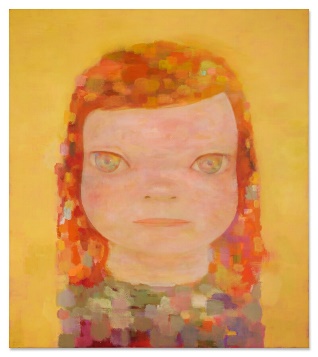
On the evening of Wednesday, November 16, Sotheby's presented two sales, the first of which, The Now Evening Sale, included 22 works by contemporary (living) artists. It is crazy how this end of the market has taken off over the past few years. Artists selling for almost nothing suddenly started making 6 and 7 figures, and others, who were making seven figures, are now selling for low six figures. Sorry, but something is going on here; anyway, on to the action.
Yoshitomo Nara's Light Haze Days / Study was a large canvas measuring 86.625 x 76.75 inches painted in 2020 and was the property of an 'Esteemed Private Collection.' So, you have an esteemed collection and hold on to work for about two years? Come on. It would be interesting to know what they paid for it and what sort of guarantee they received. The painting was estimated to bring $9-12M and hammed for $10.1M ($11.93M w/p), making it the top lot of the sale.
In a distant second was Yayoi Kusama's Pumpkin (M). This 71 x 71 x 71-inch bronze (I would not want to lift that one) was number 8 in an edition of 8 created in 2014. The piece came from a Private European Collector, who, according to the provenance, purchased it from another private collector and was estimated to sell in the $3.5-5.5M range. The lot hammered at $5.4M ($6.53M w/p), just at the upper end of its range. Taking third place was Cecily Brown's Eyes Wide Shut (2001). The 80 x 84-inch canvas was the Property of a Prominent Private Collection and was purchased at an auction in 2007 for $713K. The painting carried a $4-6M estimate and hammered at $3.7M ($4.53M w/p) – a bit below expectations, but I am sure the seller was still very happy with a multimillion-dollar profit.
Rounding out the top five was a tiny piece by Elizabeth Payton titled Nick with His Eyes Shut. This painting, executed in 2003, measured 11 x 14 inches and carried a $1-1.5M estimate. After a little bidding battle, the work hammered for $2M ($2.47M w/p). Then there was Nicolas Party's massive soft pastel on canvas work titled Landscape. The 102 x 35-inch canvas was created in 2016 and was expected to sell in the $2-3M range but hammered at $1.9M ($2.35M w/p).
There were a few big winners, including Louis Fratino's An Argument, painted in 2021, came from a Prestigious European Collection, and carried a $200-300K estimate; it hammered for $580K ($731K w/p). Salman Toor's Four Friends, painted in 2019, brought $1.25M ($1.563M w/p) on a $300-400K estimate, while Julien Nguyen's Noli me tangere, Caesaris sum from 2018 made $350K ($441K w/p) on an $80-120K estimate. Then there was Lucy Bull's 2020 painting titled 16:43 which was expected to sell in the $100-150K range and brought $420K ($529K w/p).
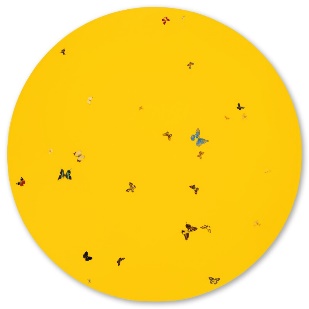 The most interesting lot of the evening, at least for me, was Damien Hirst's Beauty is in the Eye of the Beholder. In 2002, this painting appeared at a Sotheby's auction with a $500-700K estimate and sold for $538K w/p. Then the work came back in the market in 2007, also at Sotheby's, with a $1-1.5M estimate, bringing $1.16M w/p. Now, 15 years later, it reappears at auction with a $600-800K estimate and hammers for just $400K ($484K). Has the artist's work taken that big of a correction?
The most interesting lot of the evening, at least for me, was Damien Hirst's Beauty is in the Eye of the Beholder. In 2002, this painting appeared at a Sotheby's auction with a $500-700K estimate and sold for $538K w/p. Then the work came back in the market in 2007, also at Sotheby's, with a $1-1.5M estimate, bringing $1.16M w/p. Now, 15 years later, it reappears at auction with a $600-800K estimate and hammers for just $400K ($484K). Has the artist's work taken that big of a correction?
By the time The Now Evening Sale ended, of the 22 lots offered, all sold; yes, this was a white glove sale. The total sum was a strong $37.5M ($45.8M w/p), based on the $29.4-$42.2M presale estimate. Of the 22 works, 4 were below, 8 within, and 10 above their expected range, giving them an accuracy rate of 36.4%. Regardless of your thoughts about the works offered, the total price shows a strong demand for the genre.
Christie's New York 20th Century Sale
By: Nathan
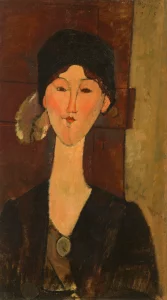 On Thursday, November 17, Christie’s New York hosted their 20th Century evening sale, featuring works from many schools and styles, from impressionist to expressionist to surrealist to pop art. Though it was an impressive array of modern masterworks, unfortunately the sale did not do as well as many had expected (w/p = with buyer’s premium).
On Thursday, November 17, Christie’s New York hosted their 20th Century evening sale, featuring works from many schools and styles, from impressionist to expressionist to surrealist to pop art. Though it was an impressive array of modern masterworks, unfortunately the sale did not do as well as many had expected (w/p = with buyer’s premium).
The top lots that night featured a tie at the top. The portrait of Beatrice Hastings by Amedeo Modigliani was featured early in the sale. It’s a work with all the recognizable features of a Modigliani portrait, particularly the elongated features, almond eyes, and the use of yellows, reds, and browns. It was last sold at auction at Christie’s New York in 2002 for $4.2M w/p. The second of the two, featured more towards the middle of the sale, was an untitled work by Mark Rothko. Created in 1969, the painting was only exhibited once, at Atlanta’s High Museum in 1989. Both the Modigliani and the Rothko sold for $15M (or $17.5M w/p), falling within their respective estimates of $12M to $18M and $15M to $20M. Following up not far behind was an untitled work by the American abstract expressionist Joan Mitchell. This was one of the fourteen works featured from the collection of Roger Sant, founder of the AES Corporation. The painting sold for $12M, falling within a $10M to $15M estimate.
There weren't many surprises in the sale, but it did end with a bit of a bang thanks to our old favorite: the king of surprises nowadays, the American artist Ernie Barnes. Back in May, at a Christie’s 20th Century sale, The Sugar Shack by Ernie Barnes sold for $13M (or $15.3M w/p), sixty-five times what anyone expected. Since then, Barnes’s work has become increasingly desirable, blowing away expectations left and right. Of course, the last work featured in Thursday’s sale was no different. One-on-None, one of Barnes’s basketball works, was given an estimate of $80K at most, which it easily smashed when the hammer came down at $750K (or $945K w/p), or over nine times what the house specialists had predicted.
While the sale had many great successes, the auction could have done better overall. This was due in part to one unsold lot. Many had traveled to attend the auction in person to see Willem de Kooning‘s Untitled III. The seller obtained the enormous abstract expressionist painting, a 70 x 80 inch oil-on-canvas created around 1978, directly from the de Kooning family. Christie's specialists predicted that the work could have sold in excess of $35M. However, after only a few minutes of bidding, interest began to plateau at around $27M. It was a great surprise when the auctioneer Jussi Pylkkänen brought down the hammer and announced that it would be a pass. The de Kooning was one of three lots that went unsold that night, along with a Hans Hoffmann work and a Paul Gauguin painting. Apart from the unsold de Kooning, the number of lots sold below estimate also led to the sale’s underperformance. Out of sixty-nine available lots, twenty-eight (41%) sold below estimate. The same sold within estimate, while ten lots (14%) sold above estimate. The sale brought in $255.5M when it was predicted to make at least $285.3M. All in all, not the best day for Christie’s.
____________________
Deeper Thoughts
By: Nathan
Mondrian Hung Upside Down
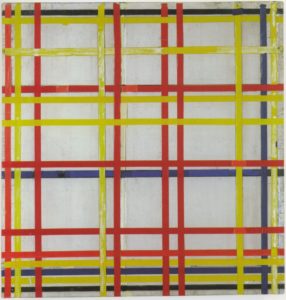 I know that much of modern art, especially the more abstract variety, gets a negative reputation from some casual viewers. “I don’t get it,” “My kid could do that,” “They’re just a bunch of lines,” and whatnot. It seems inconceivable, but it shows how far artistic creativity has advanced; that something groundbreaking and revolutionary in its own day is now not particularly impressive. But for all the criticism the art world receives for admiring abstract painters like Mark Rothko or Jackson Pollock, we got a bit of a lesson last week that may teach us not to be so dismissive of these criticisms.
I know that much of modern art, especially the more abstract variety, gets a negative reputation from some casual viewers. “I don’t get it,” “My kid could do that,” “They’re just a bunch of lines,” and whatnot. It seems inconceivable, but it shows how far artistic creativity has advanced; that something groundbreaking and revolutionary in its own day is now not particularly impressive. But for all the criticism the art world receives for admiring abstract painters like Mark Rothko or Jackson Pollock, we got a bit of a lesson last week that may teach us not to be so dismissive of these criticisms.
New York City I is a work by the Dutch abstract painter Piet Mondrian that has been hanging in the State Collection of North Rhine-Westphalia in the German city of Düsseldorf since 1980. The work is very typical of Mondrian, with a series of perfectly straight lines in black and primary colors, creating various squares and rectangles with empty space. While the original oil-on-canvas version hangs at the Musée National d’Art Moderne in Paris, this second version is unfinished, consisting mainly of the strips of painted tape used by Mondrian to help him choose colors and design. The State Collection has been in the process of getting a Mondrian exhibition ready for next year. In doing so, one of the curators, Susanne Meyer-Büser, noticed that the painting had been displayed upside down all this time.
It is not known how this mistake was made. But curators at the State Collection are now afraid that the work has been displayed incorrectly for so long that fixing that error and showing it the right way around could result in the work becoming damaged. Because it is technically unfinished, the work has no markings like a signature, so I suppose without any reference, it’s not particularly strange that museum staff could not know which way it was supposed to hang. Meyer-Büser only realized the mistake when she saw that the “thickening of the grid should be at the top, like a dark sky”. It's amazing that it took this long to realize their mistake since the original in Paris has always been displayed the right way around. Additionally, photographs of Mondrian’s studio shortly before his death in 1944 show the work on an easel positioned correctly.
While the work cannot be displayed correctly again, having been hung upside down for so long, this little hiccup adds a bit of uniqueness to the work. Yes, it’s unfinished and unsigned, but now it’s the painting that hung upside down for decades. I hope this would draw more people not just to the upcoming Mondrian exhibition, but to the museum in general.
Banksy In Ukraine
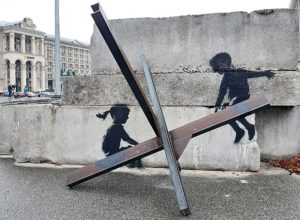
The anonymous British street artist Banksy is no stranger to areas of conflict. In 2017, he visited the West Bank, where he created several works on the border walls built by Israel to call attention to the plight the people in the area face. And now, after not putting out any new major works since his visit to southern English beach towns in what he called the Great British Spraycation, Banksy is back at it again, this time in one of the most dangerous places in Europe at the moment. Some people in the Ukrainian city of Borodyanka, just less than 30 miles northwest of Kyiv, noticed works of graffiti among some of the area’s abandoned buildings, partially destroyed by Russian shelling, that appeared very similar to the work of the anonymous Bristol graffiti artist. Not long after, Banksy took to Instagram to reveal that he had been to Ukraine, creating seven new works in Kyiv and other cities and towns in the north of the country.
While these works are of varying subjects, locals in Borodyanka came to find the one with the strongest message in their city. It shows a grown man and a small boy sparring with one another in judo outfits and black belts. The boy is in the process of flipping the grown man onto his back. Some have pointed out that the man and the black belt he wears are meant to represent Vladimir Putin, who is known for his martial arts hobbies. But I believe it contains a greater message. It is the metaphor for Ukrainian resilience against what was supposed to be an unstoppable Russian military tidal wave. The Ukrainians have surprised everyone by beating the Russians back, as shown by the liberation of the key city of Kherson only on November 11th. However, most of the recently discovered works don’t contain elaborate metaphors but point out the suffering of Ukrainian civilians caught in the middle. One piece found in the village of Horenka, less than 12 miles from the city center of Kyiv, is just a person bathing in the tub, displayed on one of the exposed inner walls of a partially destroyed building, showing that this was where people used to live.
Banksy is not the first well-known international artist to visit Ukraine since the start of the invasion in February. The French artist, only known as JR, visited the city of Lviv back in March, working with around one hundred locals to create a giant image of a Ukrainian refugee girl named Valeriia. That image was eventually featured on the cover of TIME magazine. So, regardless of the medium or the location, art and artists are still trying to bring light and beauty to a country ravaged by war, something for which the people of Ukraine expressed their appreciation.
Art Or The Environment: Do We Have To Choose?
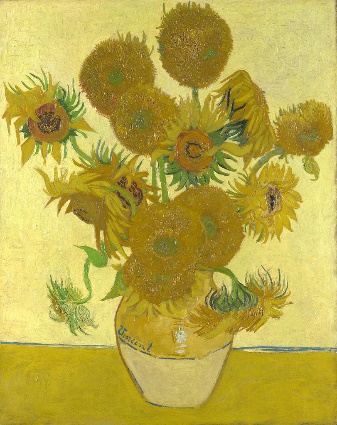 Climate protests involving attacks on major artworks are becoming increasingly common nowadays. Environmental activists staging public demonstrations is nothing new, but targeting major works of art is something that really only caught people’s attention starting October 14th of this year. That was when a pair of activists from the environmental group Just Stop Oil threw tomato soup on Vincent van Gogh’s 1888 Arles Sunflowers at the National Gallery in London before gluing their hands to the wall. Nine days later, a pair of activists went to the Museum Barberini in Potsdam, right outside Berlin, where they threw some incredibly runny mashed potatoes all over one of Claude Monet’s Haystack paintings before similarly gluing their hands to the wall. Then, on Thursday, October 28, a climate protester in The Hague tried to glue his head to Girl with a Pearl Earring by Johannes Vermeer. And most recently, on November 15th, activists from the group Last Generation threw a black substance, probably meant to represent petroleum, all over Gustav Klimt's Death and Life at Vienna's Leopold Museum. Thankfully, all of these paintings were undamaged due to a layer of protective glass over each of them. While the paintings are unharmed, that has not mitigated the outrage against these actions. Many commentators and news outlets have described these protestors as “rebellious eco-zealots” engaging in a “campaign of chaos”.
Climate protests involving attacks on major artworks are becoming increasingly common nowadays. Environmental activists staging public demonstrations is nothing new, but targeting major works of art is something that really only caught people’s attention starting October 14th of this year. That was when a pair of activists from the environmental group Just Stop Oil threw tomato soup on Vincent van Gogh’s 1888 Arles Sunflowers at the National Gallery in London before gluing their hands to the wall. Nine days later, a pair of activists went to the Museum Barberini in Potsdam, right outside Berlin, where they threw some incredibly runny mashed potatoes all over one of Claude Monet’s Haystack paintings before similarly gluing their hands to the wall. Then, on Thursday, October 28, a climate protester in The Hague tried to glue his head to Girl with a Pearl Earring by Johannes Vermeer. And most recently, on November 15th, activists from the group Last Generation threw a black substance, probably meant to represent petroleum, all over Gustav Klimt's Death and Life at Vienna's Leopold Museum. Thankfully, all of these paintings were undamaged due to a layer of protective glass over each of them. While the paintings are unharmed, that has not mitigated the outrage against these actions. Many commentators and news outlets have described these protestors as “rebellious eco-zealots” engaging in a “campaign of chaos”.
While I completely understand the anger stemming from the lack of governmental action about our ongoing climate crisis that motivates these demonstrators, I couldn’t help but feel a little uneasy when I heard these stories. I certainly don't approve of them, but I’m not going to be one of those stuffy commentators who are completely dismissive of these activists. Instead of dumping your dinner tray all over a priceless canvas, here’s what might be done. Climate protesters have targeted museums as institutions for quite some time. The British Museum, for example, has long been the target of climate activists. Not only are they one of the largest, most-visited museums in the world, but they are one of the only remaining major art institutions to maintain ties with petroleum giants like BP. The fact that they have continued digitizing their collections through NFTs, which have shown to have incredibly detrimental effects on the environment, doesn’t help improve their image. I don’t think many people have a problem with targeting museums as institutions because people visit museums to admire and appreciate the works they house. But when you go after those iconic works, many of which have become almost immediately recognizable in the broader public consciousness, some people will get mad.
Of course, no one has a problem with Monet or Van Gogh since the artists and their works are so far removed from the climate crisis. Rather, these activists hold their grievances against the institutions that house and maintain these great works of art. So, the demonstrations were meant not only to attract greater attention but to criticize the museums themselves, which often deserve a good deal of the criticism they receive regarding environmental policy. However, as symbolic as these protests were meant to be, the symbolism of these gestures was lost on many. Many see an attack on a painting simply as an attack on a painting, and that's it. There are other more appropriate and effective ways for this kind of protest, but this is not one of them since it divides rather than unites.
Some people are likely incredibly supportive of such actions, while others are dismissive and outraged at these protests. However, I think most people fall directly in the middle. Like myself, I think most are torn between the dichotomy these protests have created. These protesters, mainly from Just Stop Oil and Last Generation, have given people a choice between art and the environment. However, until these attacks, I don’t think many people really thought this dichotomy existed. Most, especially young people, are incredibly aware of our environmental situation and what that means for our well-being in the future. But does that mean we must condemn all art to be destroyed by cans of soup?
A New Old Master
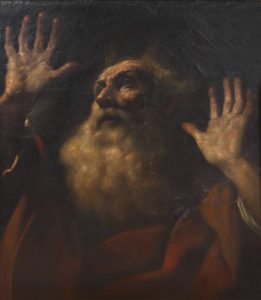
It’s not every day that you find a forgotten painting by one of the Old Masters. But that is definitely the case for the Italian baroque painter Guercino. It seems like someone suddenly rediscovers one of his portraits or religious scenes every other year. It happened in 2016 when Italian actor Federico Castelluccio bought a Saint Sebastian painting that later turned out to be a Guercino worth about $10M. Then it happened in 2017 when someone offered an art collector in Morocco a painting he later recognized as a Guercino altarpiece stolen from a church in Modena several years before. In 2020, an art dealer purchased a painting labeled as a 17th-century Dutch work at Doyles in New York and later discovered it was Guercino’s Aurora, created in 1662. And now it’s happened again, but this time in Paris.
Over Thanksgiving weekend, the Paris auction house Chayette & Cheval hosted a “thematic sale” featuring jewelry, furniture, and a few paintings. Lot 42 was a religious portrait labeled Moses, attributed to a painter of the 17th-century Bologna school, likely a student of Guido Reni. The painting was estimated to sell for no more than €6K. I suppose most people were taken aback when the painting sold for €590K (or $610K) hammer. The buyer, whoever they may be, may have suspected the portrait to be a forgotten masterwork by Guercino, since the auction house specialists had considered him as one of the possible creators of the work. And there is a good deal of evidence to suggest that this claim is true. Firstly, a very similar painting appeared at auction in Venice in 2001. It was a copy of the original by the Italian baroque painter Benedetto Zallone, one of Guercino’s students. Additionally, a different work by Guercino known as Head of an Old Man is housed at the Ashmolean Museum in Oxford and contains many similarities to the painting sold in Paris last weekend.
Jorge Coll of the Colnaghi Gallery commented on the sale, noting how not only does the painting sold in Paris contain many similarities to work at the Ashmolean Museum, but also Guercino’s Elijah Fed by Ravens, kept at the National Gallery in London. Therefore, he feels confident that Moses could be positively attributed to the Italian baroque master. Guercino’s auction record is currently £5.2M w/p (or $7.86M w/p) when King David sold at Christie’s London in 2010. So, if this forgotten masterwork receives a positive attribution from a reputable source, who knows what sort of hammer price it might achieve next?
The Rehs Family
© Rehs Galleries, Inc., New York – December 2022

